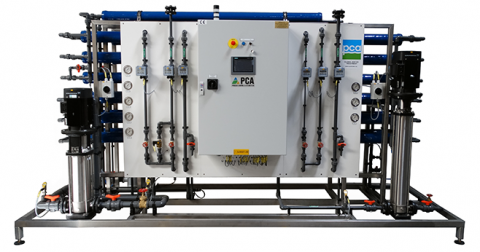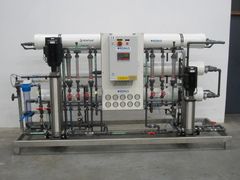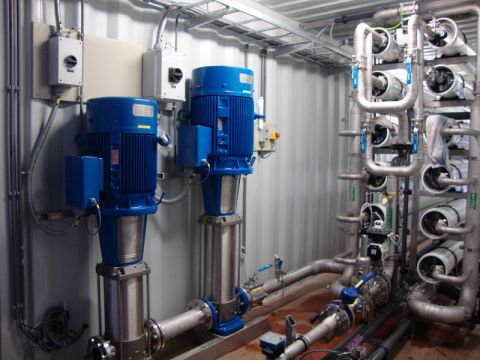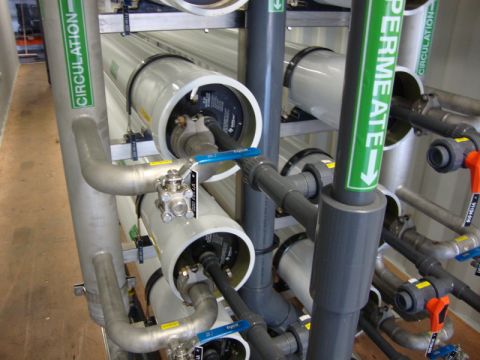Reverse osmosis
Reverse osmosis separates at ion level and retains the dissolved salts. On the one hand, RO can be used to make demineralised water out of tap water, rain water, river water and well water or similar. This process requires relatively low pressures. On the other hand, when the water is contains more dissolved salts, the required pressure during the treatment process will also be higher.
Depending on the type of water, a specific membrane is also chosen. There are, for example, membranes to produce demineralised water and others to desalt sea water.
In case of reverse osmosis, the incoming water is pumped through a membrane at high speed and a permeate is produced continuously (the demineralised water). Additionally, a concentrate is also released continuously. This concentrate flow contains all of the salts, while the permeate flow hardly contains any.
It is also important that the incoming water is softened in advance or that an antiscalant is added.
In most applications, a single-stage RO is sufficient, but sometimes a two-stage RO is required. The second stage ensures a better quality of demineralised water. If a very low conductivity has to be achieved, it is recommended to connect an EDI or mixed bed ion exchanger after the RO.
In dimensioning an RO, it is important to have a correct overall analysis of the influent. With the necessary software it is then possible to assess which membranes are needed and the quality of demineralised water these membranes can achieve at certain parameters.
PCA produces customised RO units. We are therefore certainly well-placed to develop and build the right unit for you.




